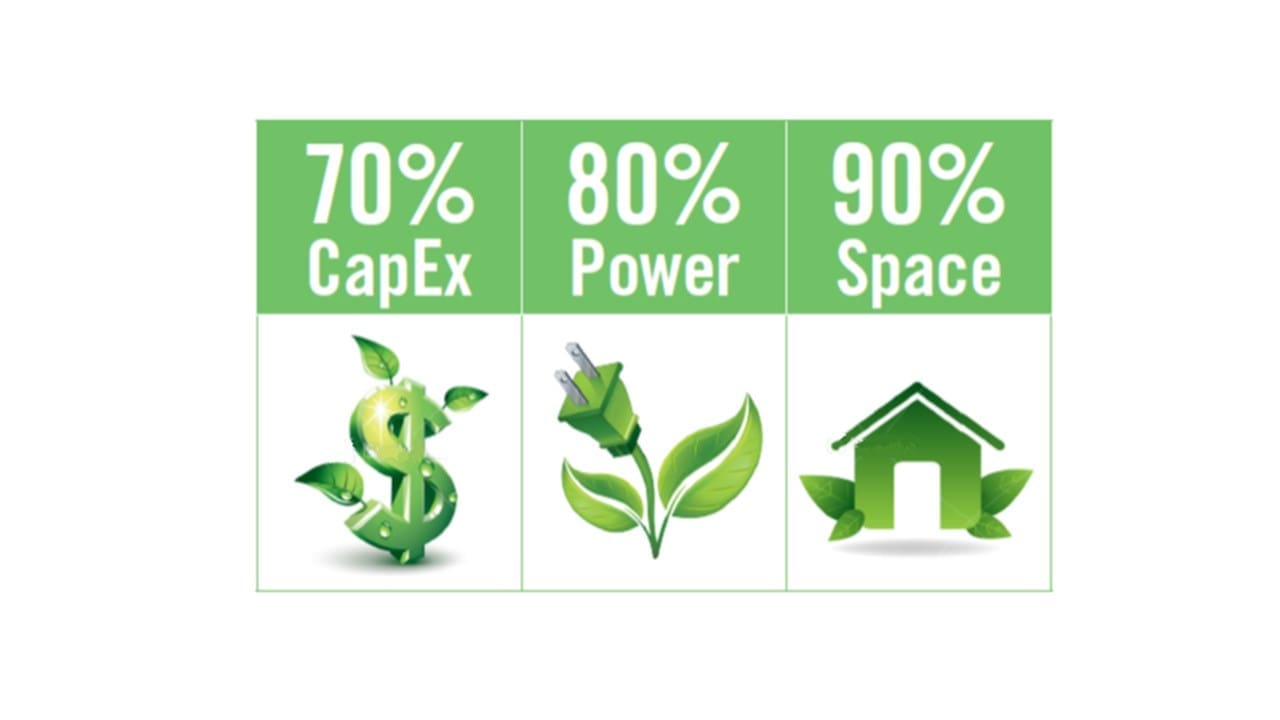Who remembers the first Optical LAN battle cry “70-80-90” from circa 2010? It was meant to be a catchy phrase that clearly articulated that Optical LAN customers gained 70% cost savings, 80% energy savings and 90% space savings. 70-80-90 was absolutely true, but our experience was that the motto missed the mark. Looking back, the reasons why 70-80-90 did not resonate is both funny and insightful.
70% Cost Savings
In the early days of Optical LAN, many of our customers enjoyed CapEx and OpEx savings up to 70%. The problem was they were 3-letter government agencies, and we were not at liberty to share their info.
The truth is that our customers are still at times enjoying up to 70% on-going “operational” savings and from zero to +50% capital cost savings. For example, a recent APOLAN cost comparison study showcases 40-56% cost savings. And let me be very clear, 0% CapEx is a good deal for a future-proof technology that is far more reliable, offers industry leading security and can payback a 70% annuity in OpEx savings year over year.
80% Energy Savings
The 80% energy savings calculations came from those same large Fed Gov customers. Back then we were replacing big iron switches spread-out across very large campuses. In 2013 Sandia National Laboratories publicly stated that they were on target to save one million kilowatt hours (kwh) every year based on upgrading to Optical LAN!
So, why wasn’t 80% energy savings compelling? Unfortunately, we were talking to IT leaders, and power savings wasn’t a high priority to them. Certainly, we would have been more successful representing the energy savings to C-level suite or facilities folks.
Fast forward to today, and our customers still gain energy savings with OLAN. 80% is hard to hit, unless you’re replacing big iron, but our customers do enjoy savings by reducing or eliminating telecom closets (i.e. IDFs) and the rippling effect of those power savings. We’re also seeing customers lower air conditioning use in the IDFs that house our closet-based ONTs, because our ONTs have extended temperature range compared to closet-based switches.
90% Space Savings
Whether we’re talking about 2010, or today, the 90% space savings still holds true. Optical LAN always has reduced equipment footprint in the main data center. Plus, it uses smaller fiber cabling and less fiber cabling in the raisers and horizontal of building pathways. And, we already mentioned OLAN’s ability to reduce or eliminate telecom closets. Finally, there are many creative mounting options for the ONTs, so that they never impact a building’s revenue generation floorspace.
So, why wasn’t 90% space savings perceived as a big benefit? Again, we were talking to the IT staff – better to showcase these space saving benefits to building Architects, Consultants and Engineers.
Far greater savings with Simple, Secure, Stable and Scalable!
By 2015 it was apparent that we needed to change our messaging. So, we identified the IT job key performance indicators (KPIs) that directly impacted IT staff pay rate, bonus and career advancement – operational efficiencies (doing their job smarter, faster and with fewer errors), network reliability (i.e. uptime, availability) and network security (i.e. breach mitigation).
Truthfully, there is far greater money saved by a network that is simple, secure, stable and scalable, when compared with the capital cost, power and space savings.
Advanced Operations – Our customers like Deltek consistently report operational savings in the $100,000 range annually. OLAN simplifies end-to-end network management with one single graphical user interface console that orchestrates all endpoints through software defined global profiles. This allow IT staff to do their jobs smarter, faster and with fewer errors.
Advanced Availability – We’ve always been bragging about OLAN 5-9s 99.999% calculated network availability compared to traditional design of 3-9s 99.9%. When you do the math using average worker pay per hour (D&B says $65 an hour), for a business with 1,000 employees, and times that by average annual downtime – the outcome says that OLAN architecture can save approximately $485,000 in worker annual productivity alone.
Advanced Security – The scary thing about network security is that when things go bad, they go really bad. A company with 1,000 employees is at risk for $1,000,000 in financial losses if a security breach occurs and it’s probable that IT staff may lose their job over such an incident. That is why the highest degree of network security is imperative and OLAN removes known vulnerability points for enterprise networks.!
If you want to learn more about Passive Optical LAN for enterprise markets, you can connect with us on your favorite social media outlet, such as; Facebook, LinkedIn, Twitter, Instagram, and YouTube.
